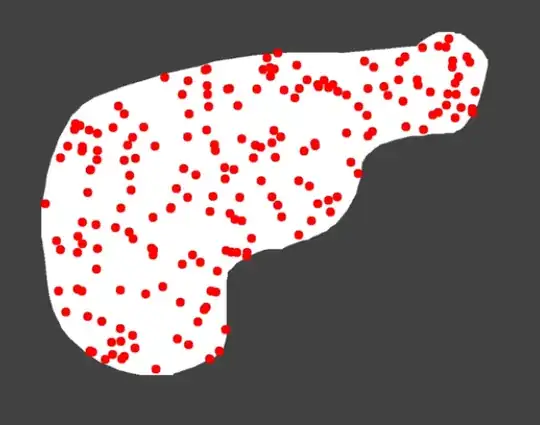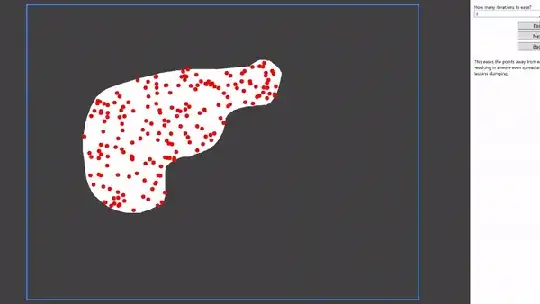I was working on a program that generates random tiles in a given shape. To do this I generated random points inside the shape and would use them to color the tiles.
However, after noticing clumping of the points, I decided to create a way to spread them out more. My first thought was to simulate the points repelling each other, basically using the same equation as Coulomb's Law (but simplified and with acceleration instead):
Coulomb's Law
$$\boldsymbol{\vec{F}}=K\frac{Q_1 * Q_2}{R^2} \boldsymbol{\hat{r}}$$
Simplified for my use:
$$\boldsymbol{\vec{A}}=-\frac{K}{R^2}\boldsymbol{\hat{r}}$$
I them clamped the positions of the points so that they lie within a set shape. Running this "simulation", here's what I got:
Unfortunately, rather than spreading out more evenly, they all accumulated on the edges of the shape. While this was annoying, I vaguely remembered something in Physics class about how electrons accumulate on the surface of a wire. So my question is: If electrons were placed randomly in a closed shape, would they accumulate on the surface of the shape as shown in my program? Or did I just screw up my code :P

